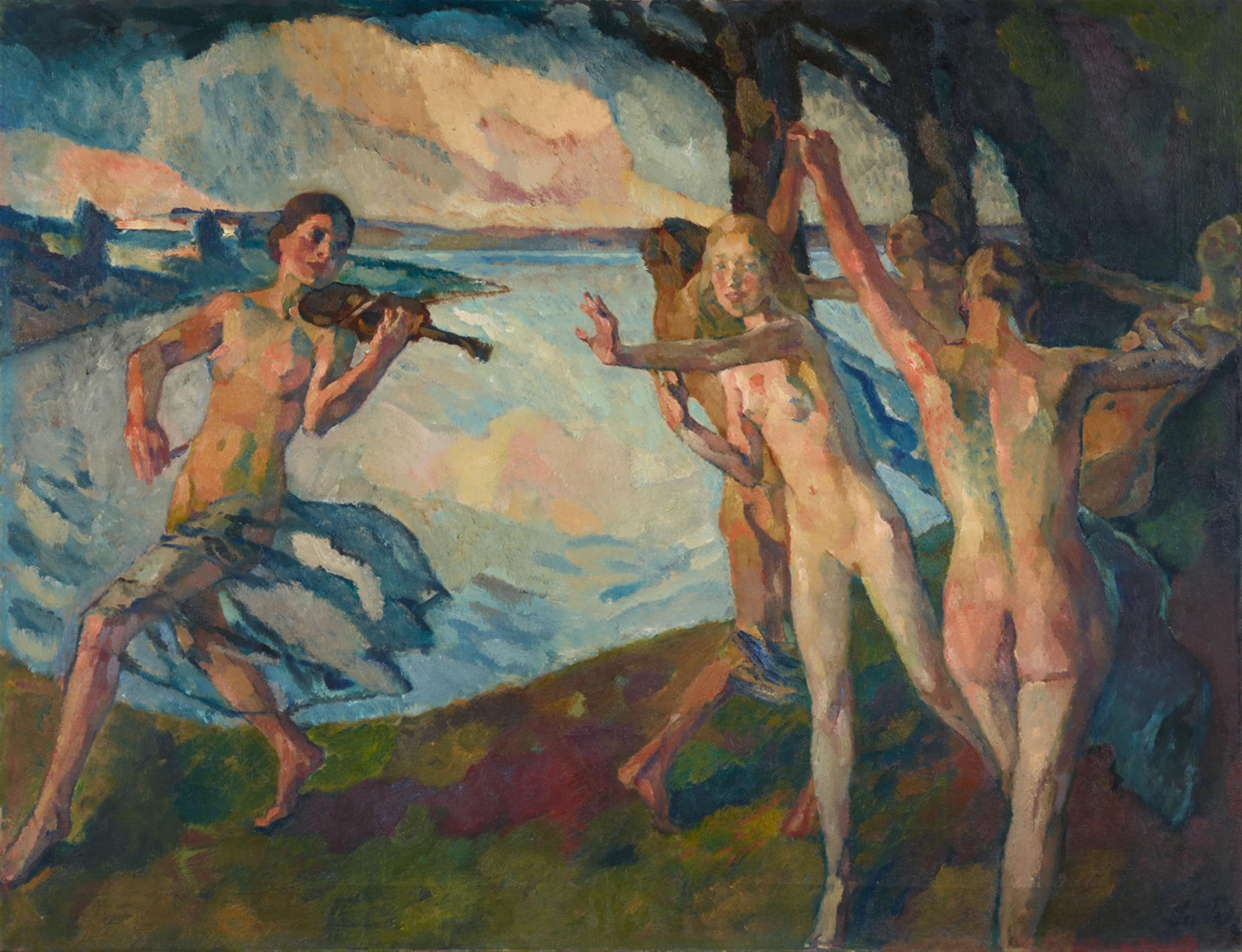Leo Putz
Reigen 2. I.
1921
Oil on canvas 124 x 160.5 cm Framed. Signed 'Leo Putz' in black lower right. Old label verso, therein handwritten name of artist, title and year. - In the central bank area in the lower part of the picture with a narrow, unobtrusive retouch.
This work was created just a few years after the First World War. The 60-year-old Leo Putz lived in Munich and directly experienced the revolutionary unrest. It is surely no coincidence that precisely in this period the theme of Symbolism gained ground in his work - that is to say that he presented things in a cryptic manner: between world view and liberal religion, between dream-like events and sexual liberty.
The round dance is a special form of dancing in a circle or chain, and it is as old as human memory. In the Renaissance, for example, nymphs, the Graces and allegories of the virtues engaged in this dance, as documented by artists like Sandro Botticelli. The round subsequently developed into a folk dance; eagerly pursued as a dance for groups of amateurs, it mutated into a kind of “round dance in celebration of life” in the exhilarated atmosphere around the turn of the century and in the context of the reform movements. In Putz's work the dancers' body language is directly comprehensible in the artist's individual style full of boldly colourful and expressively sensual nudity, with the male and female dancers spinning round. The female fiddler also plays in a state of ecstasy and forms a contrapposto and serpentine through the contrary movement and positioning of her head and the direction of her gaze, swaying emotionally in harmonious affinity with her musical temperament. The enthusiasm for dance in Germany and neighbouring countries since the turn of the century may have inspired Putz to create this captivating pose full of expression and a vibrant lust for life. Unfurling a powerful metaphor for exuberant eroticism as a social pastime, the artist seismographically situates it as an ideal between grace and beauty. This Dionysian release and Apollonian establishment of form (Friedrich Nietzsche) can serve as a transition to Arthur Schnitzler's erotic play “Reigen”, written in 1900 and premiered in December of 1920 at Berlin's Kleines Schauspielhaus, accompanied by Claude Debussy's “Impression: Spring”. The enigmatic quality and ambiguity of Symbolism was deliberately sought by artists, including Putz. It served them as a means to express what can only be felt and believed: a mental attitude that was anti-positivist and created a shared style by way of an interest in esotericism and the use of symbols for emotional worlds. To this extent it forms a directly intimate, but equally mysterious dream apparition: in any case, regardless of all this symbolic loading with meaning, Putz sought pleasure in the process of painting.
Catalogue Raisonné
H. Putz II 650
Provenance
Acquired directly from the artist by the former owner; in family possession since, South Germany

